Modelling Initiation Stage of Backward Erosion Piping through Analytical Models
Abstract
:1. Introduction
2. Literature Review
3. Comparison between the Two Analytical Models
3.1. Xiao’s Model [33]
3.2. Wu’s Model [34]
3.3. Comparison of Models with Different Ditch Widths
4. Reliability in 3D Analysis
4.1. Physical Conditions in the Field
4.2. Adapted Conditions for the Laboratory Model
4.3. Results Analysis
4.4. Parametric Analysis
5. Discussion
6. Conclusions
Author Contributions
Funding
Data Availability Statement
Conflicts of Interest
References
- Foster, M.; Fell, R.; Spannagle, M. The statistics of embankment dam failures and accidents. Can. Geotech. J. 2000, 37, 1000–1024. [Google Scholar] [CrossRef]
- Vrijling, J.K.; Kok, M.; Calle, E.O.F.; Epema, W.G.; van der, M.T.; van den, B.P.; Schweckendiek, T. Piping—Realiteit of Rekenfout? Technical Report; Dutch Expertise Network on Flood Protection (ENW): Utrecht, The Netherlands, 2010. (In Dutch) [Google Scholar]
- Poesen, J. Challenges in gully erosion research. Landf. Anal. 2011, 17, 5–9. [Google Scholar]
- Bligh, W.G. Dams, barrages, and weirs on porous foundations. Eng. News 1910, 64, 708–710. [Google Scholar]
- Bligh, W.G. Lessons from the failure of a weir and sluices on porous foundations. Eng. News 1913, 69, 266–270. [Google Scholar]
- Lane, E.W. Security from under-seepage-masonry dams on earth foundations. Trans. ASCE 1935, 100, 1235–1272. [Google Scholar] [CrossRef]
- De Wit, G.N.; Sellmeijer, J.B.; Penning, A. Laboratory tests on piping. In Proceedings of the 10th Int. Conference Soil Mechanics and Foundation Engineering, Rotterdam, The Netherlands, 15–19 June 1981; pp. 517–520. [Google Scholar]
- Koenders, M.A.; Sellmeijer, J.B. Mathematical model for piping. J. Geotech. Engrg. 1992, 15, 11–12. [Google Scholar] [CrossRef]
- Weijers, J.B.A.; Sellmeijer, J.B. A new model to deal with the piping mechanism on filters, in geotechnical and hydraulic engineering. In Filters in Geotechnical and Hydrauilc Engineering; Brauns, J., Herbaum, M., Schuler, U., Eds.; Balkema: Rotterdam, The Netherlands, 1993; pp. 349–355. [Google Scholar]
- Miesel, D. Rückschreitende Erosion unter bindiger Deckschicht. In Baugrundtagung; Deutschen Gesellschaft für Erd- und Grundbau e.V.: Essen, Germany, 1978; pp. 599–626. (In German) [Google Scholar]
- Hanses, U. Zur Mechanik der Entwicklung von Erosionskanälen in Geschichtetem Untergrund unter Stauanlagen. Master’s Dissertation, Grundbauinstitut der Technischen Universität Berlin, Berlin, Germany, 1985. (In German). [Google Scholar]
- Müller-Kirchenbauer, H.; Rankl, M.; Schlötzer, C. Mechanism for regressive erosion beneath dams and barrages. In Filters in Geotechnical and Hydraulic Engineering; Balkema: Rotterdam, The Netherlands, 1993; pp. 369–376. [Google Scholar]
- De Wit, J.M. Onderzoek Zandmeevoerende Wellen Rapportage Modelproeven; Rep. No. CO-220885/10; Grondmechanica Delft: Delft, The Netherlands, 1984. (In Dutch) [Google Scholar]
- Pietrus, T.J. An Experimental Investigation of Hydraulic Piping in Sand. Master’s Thesis, Department of Civil Engineering, University of Florida, Gainesville, FL, USA, 1981. [Google Scholar]
- Townsend, F.C.D.; Bloomquist, D.; Shiau, J.M.; Martinez, R.; Rubin, H. Evaluation of Filter Criteria and Thickness for Mitigating Piping in Sand; Department of Civil Engineering, University of Florida: Gainesville, FL, USA, 1988. [Google Scholar]
- Van Beek, M.; van Knoeff, J.G.; Sellmeijer, J.B. Observations on the process of backward piping by underseepage in cohesionless soils in small-, medium- and full-scale experiments. Eur. J. Environ. Civ. Eng. 2011, 15, 1115–1137. [Google Scholar]
- Schmertmann, J.H. The non-filter factor of safety against piping through sand. In ASCE Geotechnical Special Publication No. 111, Judgment and Innovation; Silva, F., Kavazanjian, E., Eds.; ASCE: Reston, VA, USA, 2000; pp. 65–132. [Google Scholar]
- Chaplot, V. Impact of terrain attributes, parent material and soil types on gully erosion. Geomorphology 2013, 186, 1–11. [Google Scholar] [CrossRef]
- Wilson, G. Understanding soil-pipe flow and its role in ephemeral gully erosion. Hydrol. Process 2011, 25, 2354–2364. [Google Scholar] [CrossRef]
- Robbins, B.A.; Montalvo-Bartolomei, A.M.; Griffiths, D.V. Analyses of backward erosion progression rates from small-scale flume experiments. J. Geotech. Geoenviron. Eng. 2020, 146, 04020093. [Google Scholar] [CrossRef]
- Sellmeijer, J.B. On the Mechanism of Piping under Impervious Structures. Ph.D. Thesis, Technische Universiteit Delft, Delft, The Netherlands, 1988. [Google Scholar]
- Hoffmans, G.; Van Rijn, L. Hydraulic approach for predicting piping in dikes. J. Hydraul. Res. 2018, 56, 268–281. [Google Scholar] [CrossRef]
- Van Beek, V.M.; Bezuijen, A.; Sellmeijer, J.; Barends, F.B.J. Initiation of backward erosion piping in uniform sands. Géotechnique 2014, 64, 927–941. [Google Scholar] [CrossRef] [Green Version]
- Sellmeijer, J.B.; Lopéz de la Cruz, J.; van Beek, V.M.; Knoeff, J.G. Fine-tuning of the piping model through smallscale, medium-scale and IJkdijk experiments. Eur. J. Environ. Civ. Engng. 2011, 15, 1139–1154. [Google Scholar] [CrossRef]
- DeHaan, H.; Stamper, J.; Walters, B. Mississippi River and Tributaries System 2011 Post-Flood Report; USACE: Vicksburg, MS, USA, 2012. [Google Scholar]
- Schaefer, J.A.; O’Leary, T.M.; Robbins, B.A. Assessing the implications of sand boils for backward erosion piping risk. In Proc., Geo-Risk 2017: Geotechnical Risk Assessment and Management—GSP 285; ASCE: Reston, VA, USA, 2017. [Google Scholar]
- Fleshman, M.; Rice, J. Laboratory modeling of the mechanisms of piping erosion initiation. J. Geotech. Geoenviron. Eng. 2014, 140, 04014017. [Google Scholar] [CrossRef]
- Van Beek, V. Backward Erosion Piping. Initiation and Progression. Ph.D. Thesis, Technische Universiteit Delft, Delft, The Netherlands, 2015. [Google Scholar]
- Allan, R.J. Backward Erosion Piping. Ph.D. Thesis, University of New South Wales, Sydney, Australia, 2018. [Google Scholar]
- Peng, S.; Rice, J. Measuring critical gradients for soil loosening and initiation of backward erosion-piping mechanism. J. Geotech. Geoenviron. Eng. 2020, 146, 04020069. [Google Scholar] [CrossRef]
- Lowe, D.R. Water escape structures in coarse-grained sediments. Sedimentology 1975, 22, 157–204. [Google Scholar] [CrossRef]
- Xiao, Y.; Cao, H.; Luo, G. Experimental investigation of the backward erosion mechanism near the pipe tip. Acta Geotech. 2019, 14, 767–781. [Google Scholar] [CrossRef]
- Xiao, Y.; Cao, H.; Luo, G.; Zhai, C. Modelling seepage flow near the pipe tip. Acta Geotech. 2020, 14, 767–781. [Google Scholar] [CrossRef]
- Anhui Water Resources Research Institute. Theory of Seepage Flow for Calculating Layerd Media and Relief Ditches and Relief Wells; Water Resources Press: Beijing, China, 1980; pp. 331–334. (In Chinese) [Google Scholar]
- Zhou, H.; Wang, S.; Qu, X.; Yang, J. Method for calculating seepage flow to draining ditches in plain area. J. Hydraul. Eng. 2007, 38, 991–997. [Google Scholar]
- Zhou, H. Research on Mechanism and Numerical Simulation Method of Seepage Failure of Dike Foundation. Ph.D. Thesis, South China University of Technology, Guangzhou, China, 2011. [Google Scholar]
- Peng, S.; Rice, J. Inverse analysis of laboratory data and observations for evaluation of backward erosion piping process. J. Rock Mech. Geotech. Eng. 2020, 12, 1080–1092. [Google Scholar] [CrossRef]
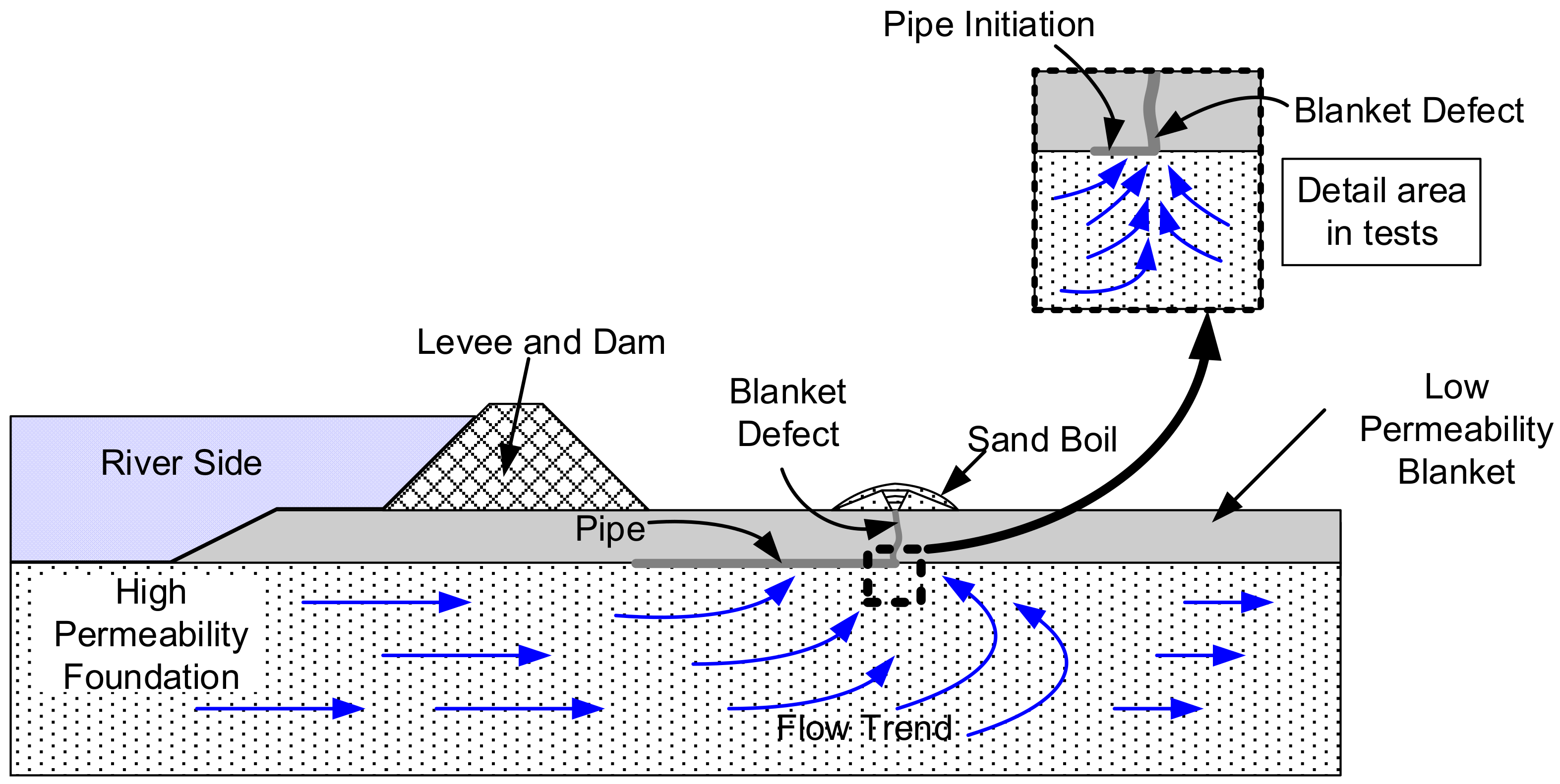
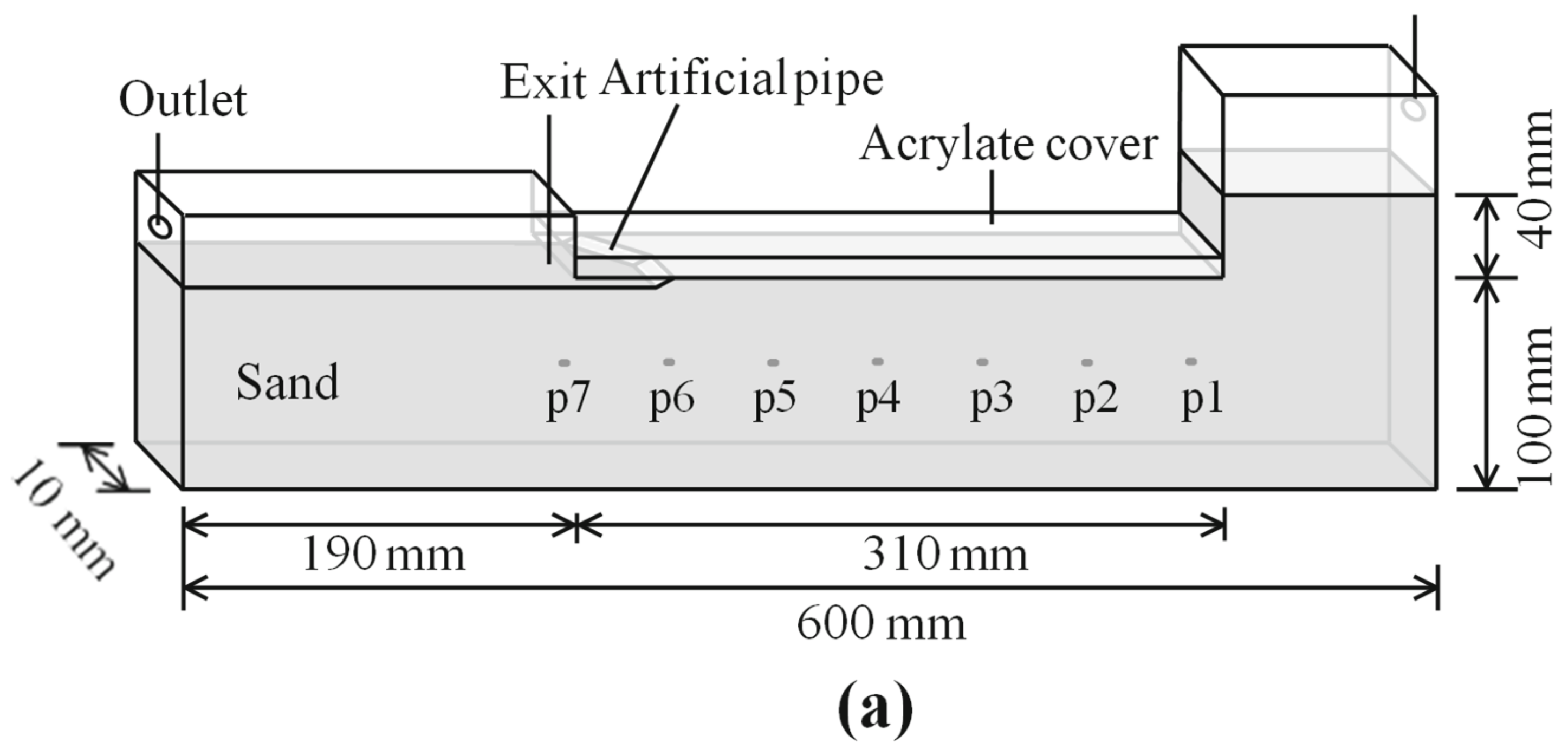

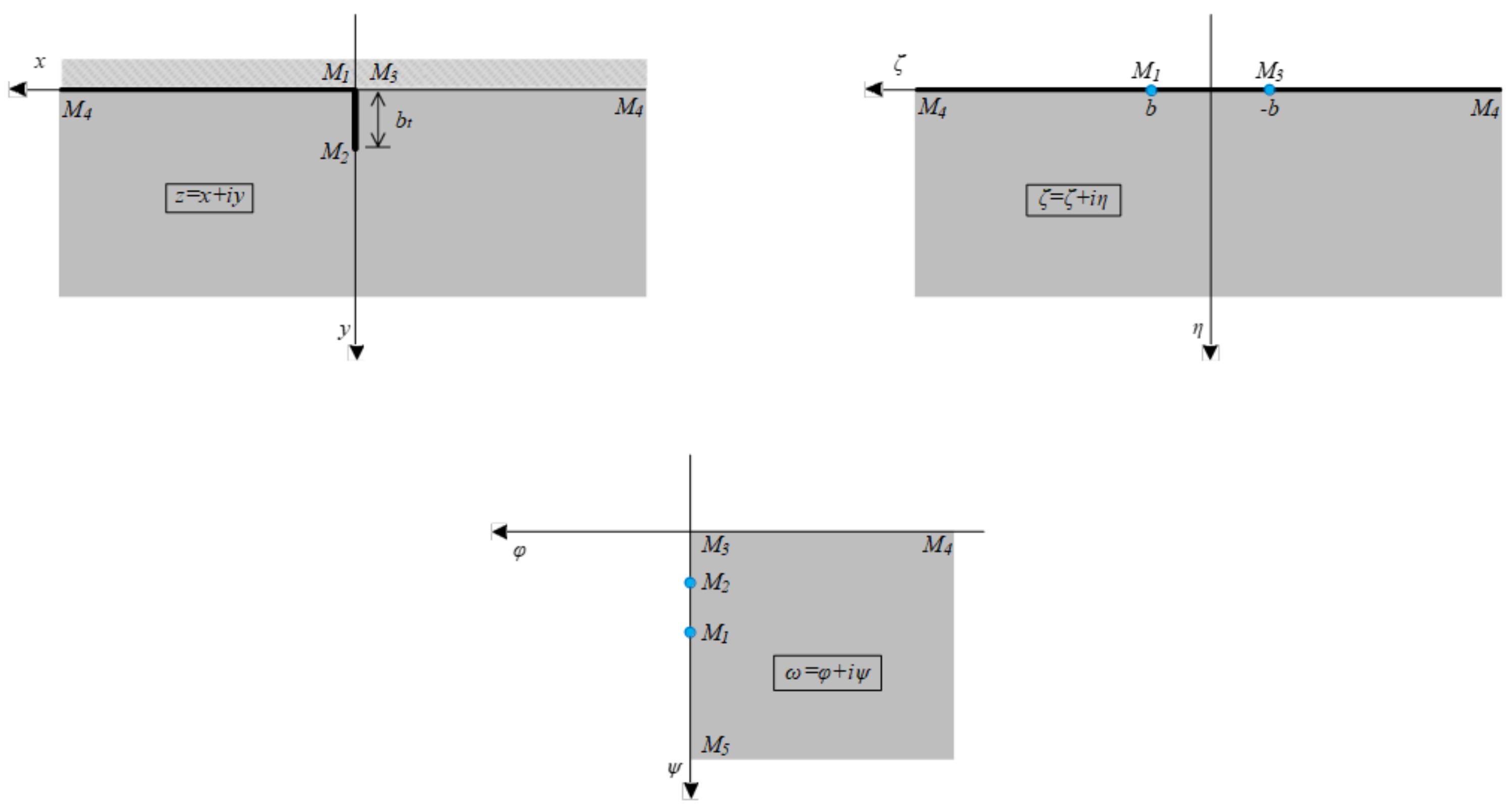
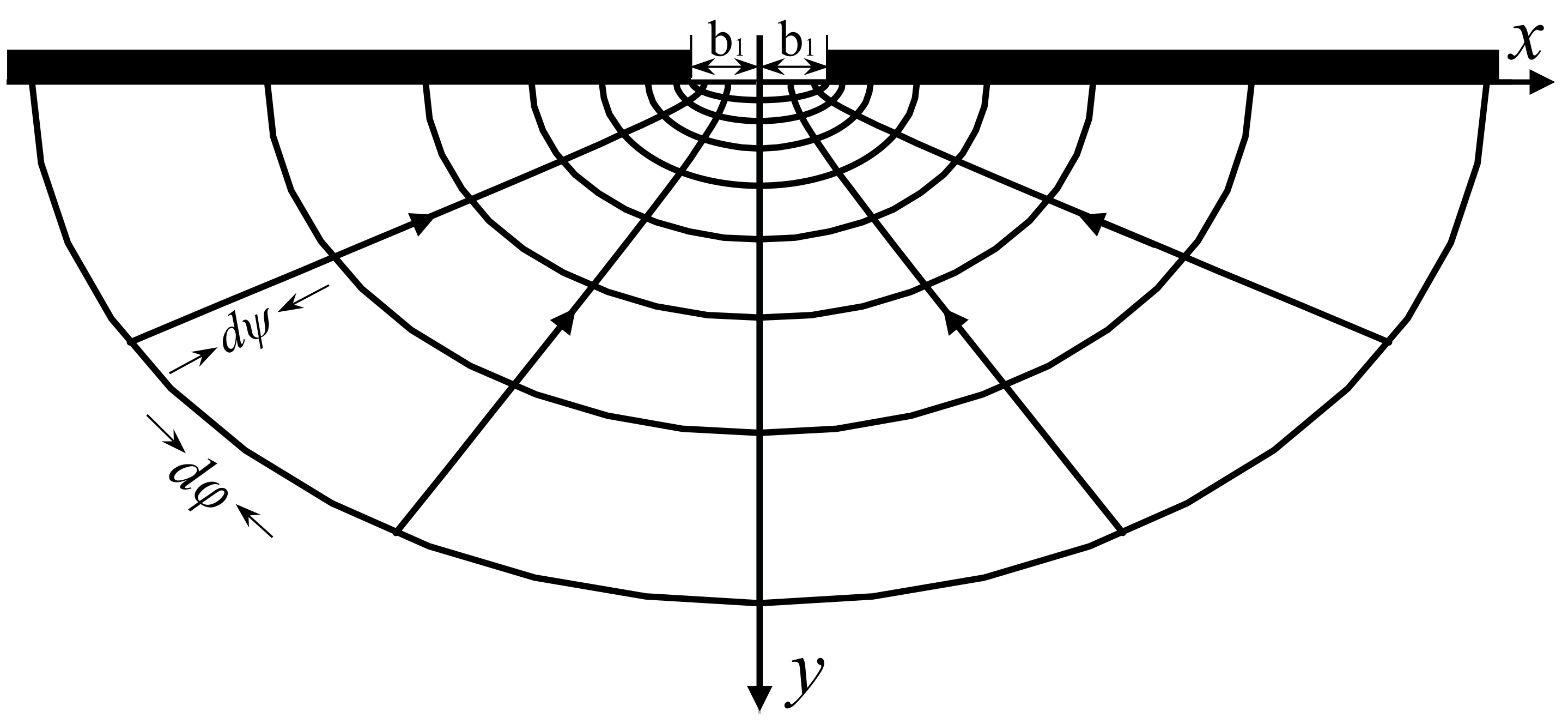
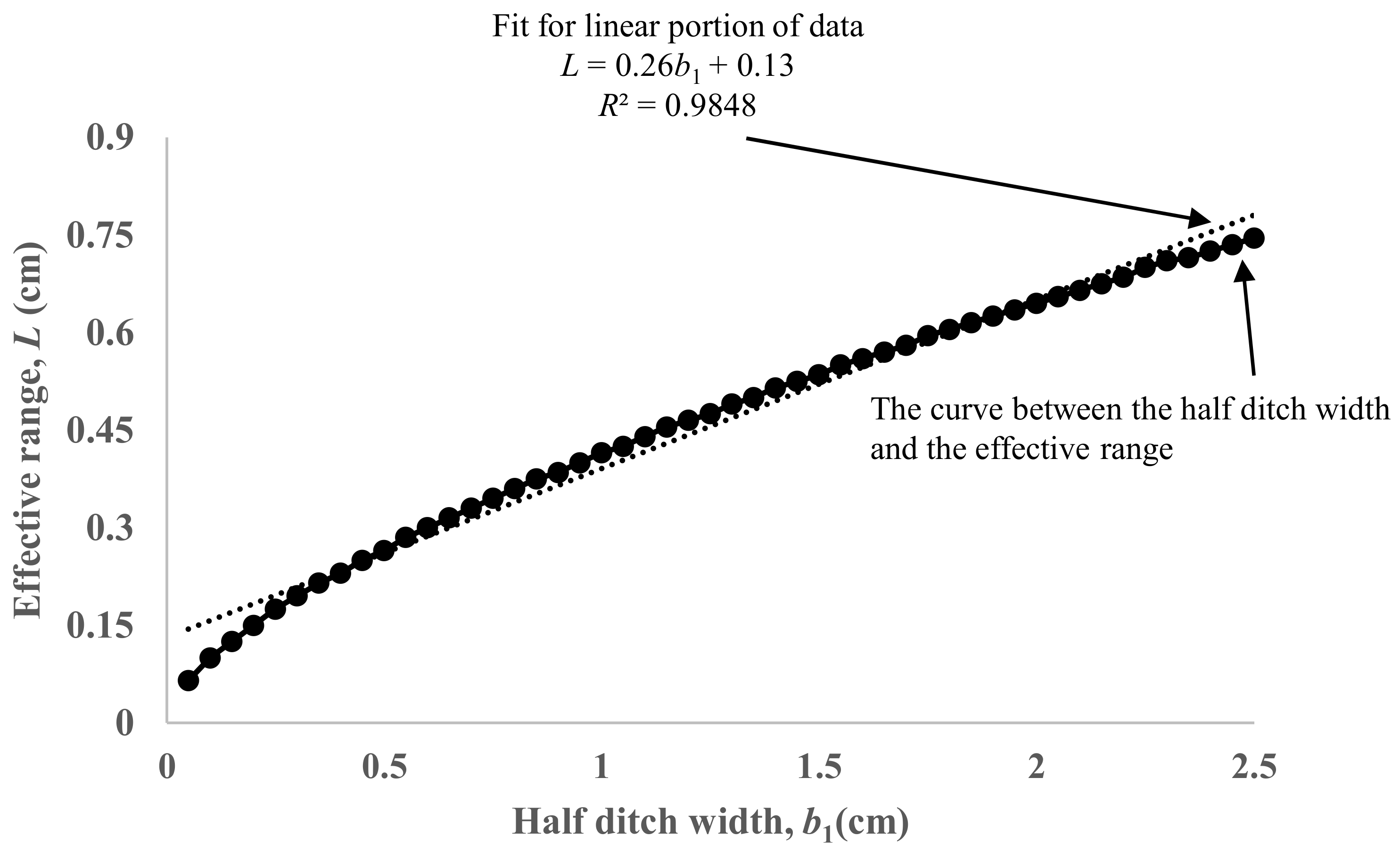



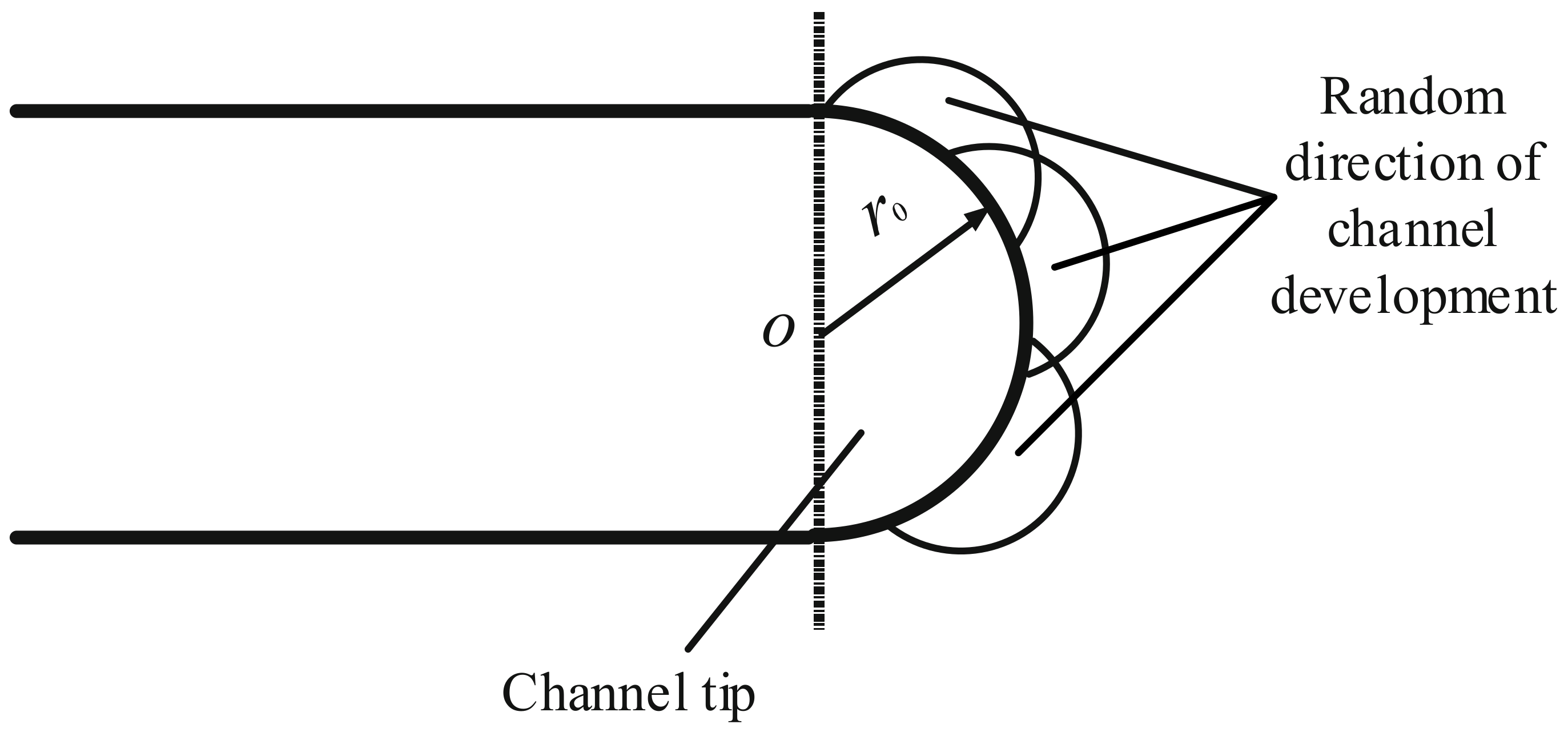
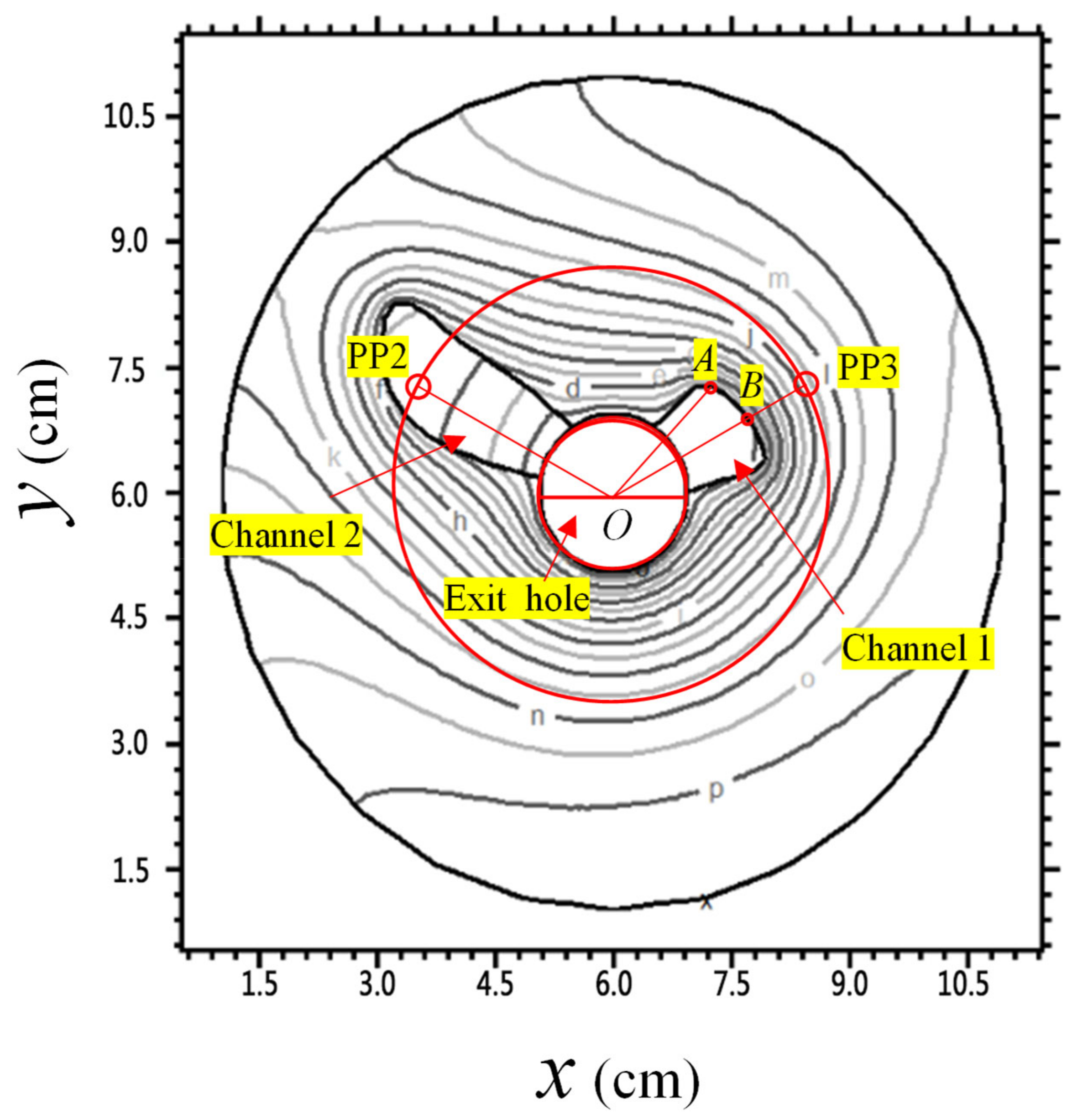

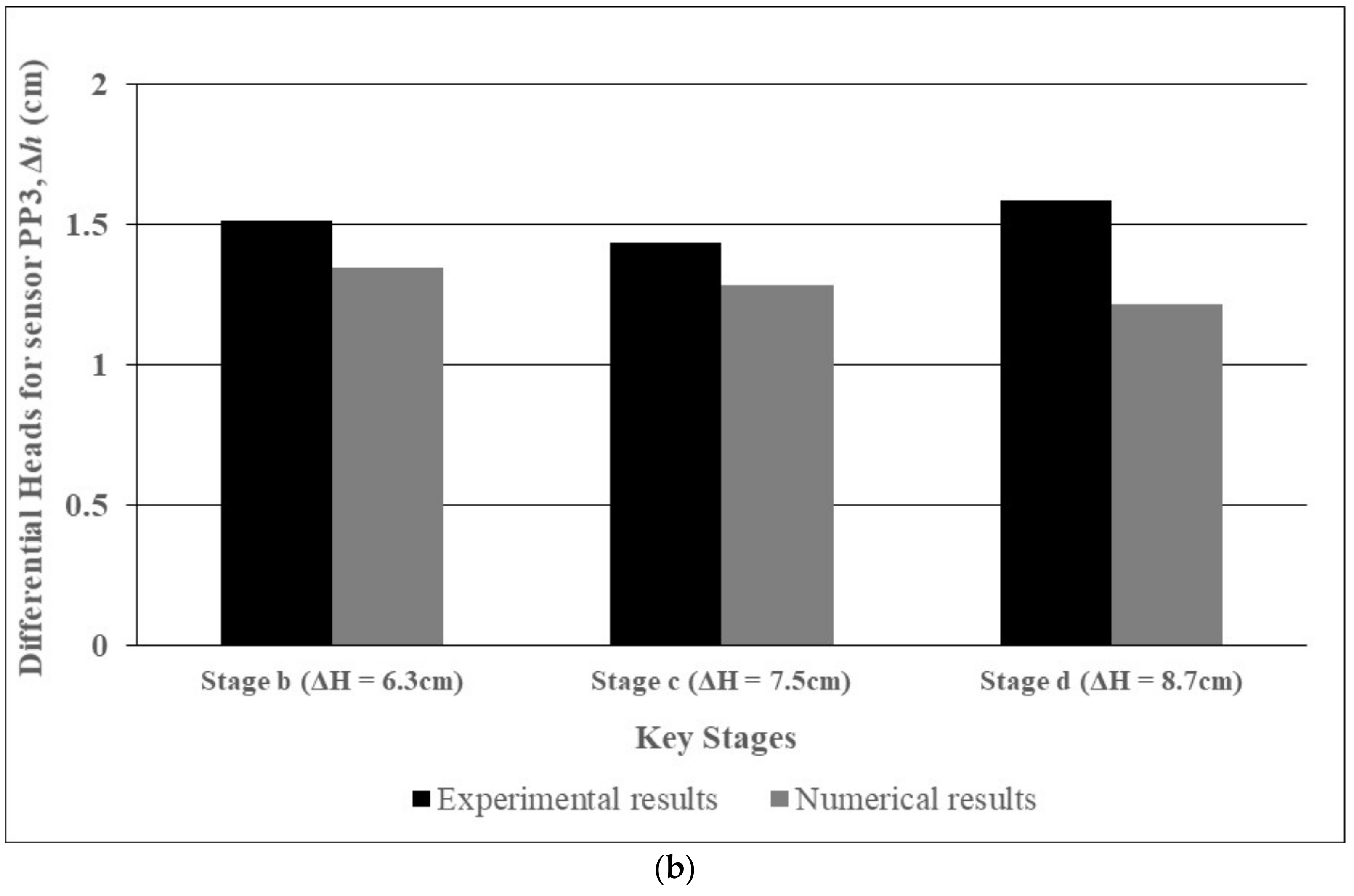
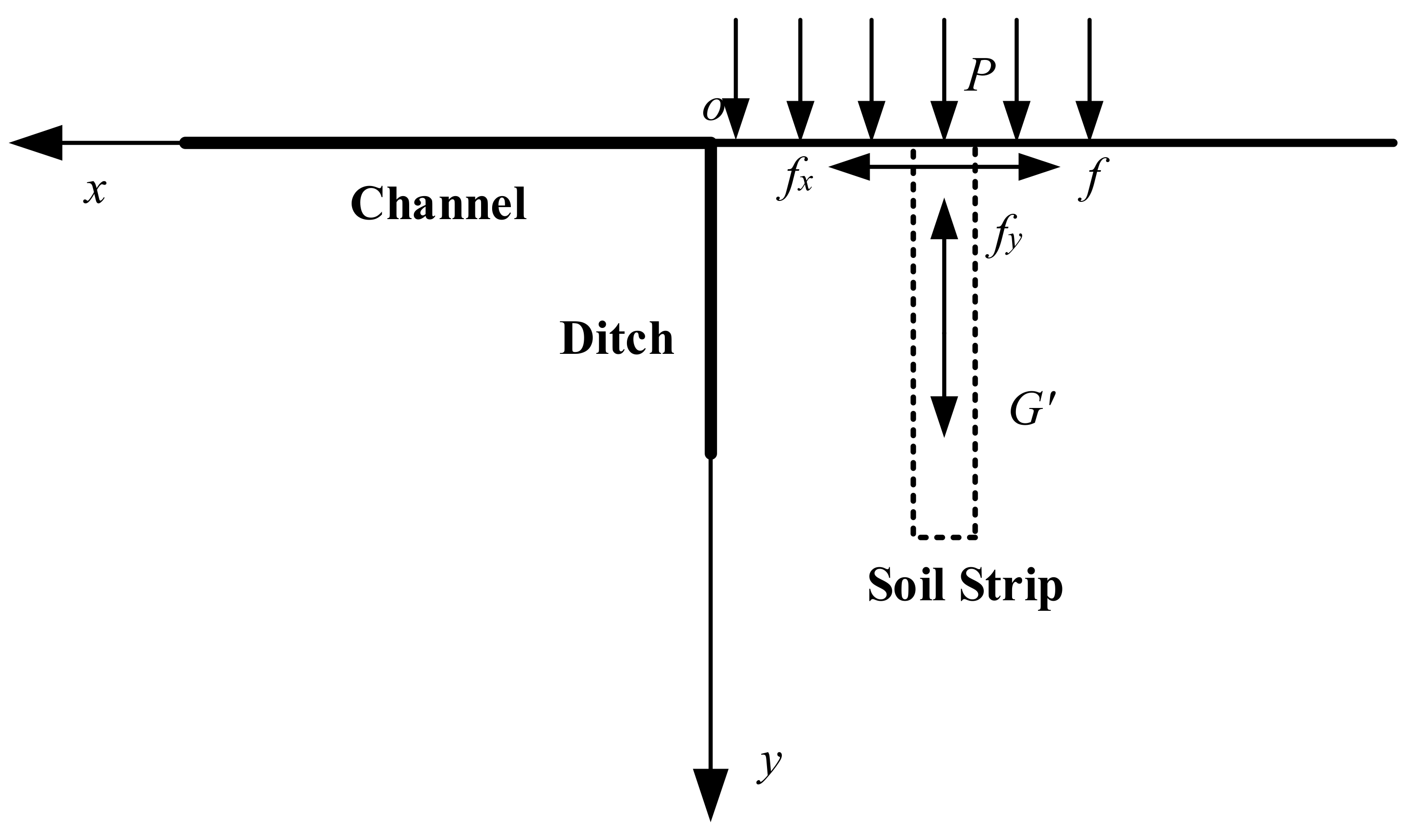
Publisher’s Note: MDPI stays neutral with regard to jurisdictional claims in published maps and institutional affiliations. |
© 2022 by the authors. Licensee MDPI, Basel, Switzerland. This article is an open access article distributed under the terms and conditions of the Creative Commons Attribution (CC BY) license (https://creativecommons.org/licenses/by/4.0/).
Share and Cite
Luo, G.; Rice, J.D.; Peng, S.; Cao, H.; Pan, H.; Xu, G. Modelling Initiation Stage of Backward Erosion Piping through Analytical Models. Land 2022, 11, 1970. https://doi.org/10.3390/land11111970
Luo G, Rice JD, Peng S, Cao H, Pan H, Xu G. Modelling Initiation Stage of Backward Erosion Piping through Analytical Models. Land. 2022; 11(11):1970. https://doi.org/10.3390/land11111970
Chicago/Turabian StyleLuo, Guanyong, John D. Rice, Sige Peng, Hong Cao, Hong Pan, and Guoyuan Xu. 2022. "Modelling Initiation Stage of Backward Erosion Piping through Analytical Models" Land 11, no. 11: 1970. https://doi.org/10.3390/land11111970



